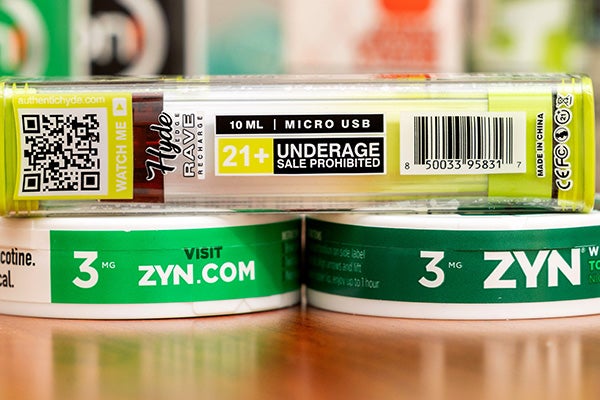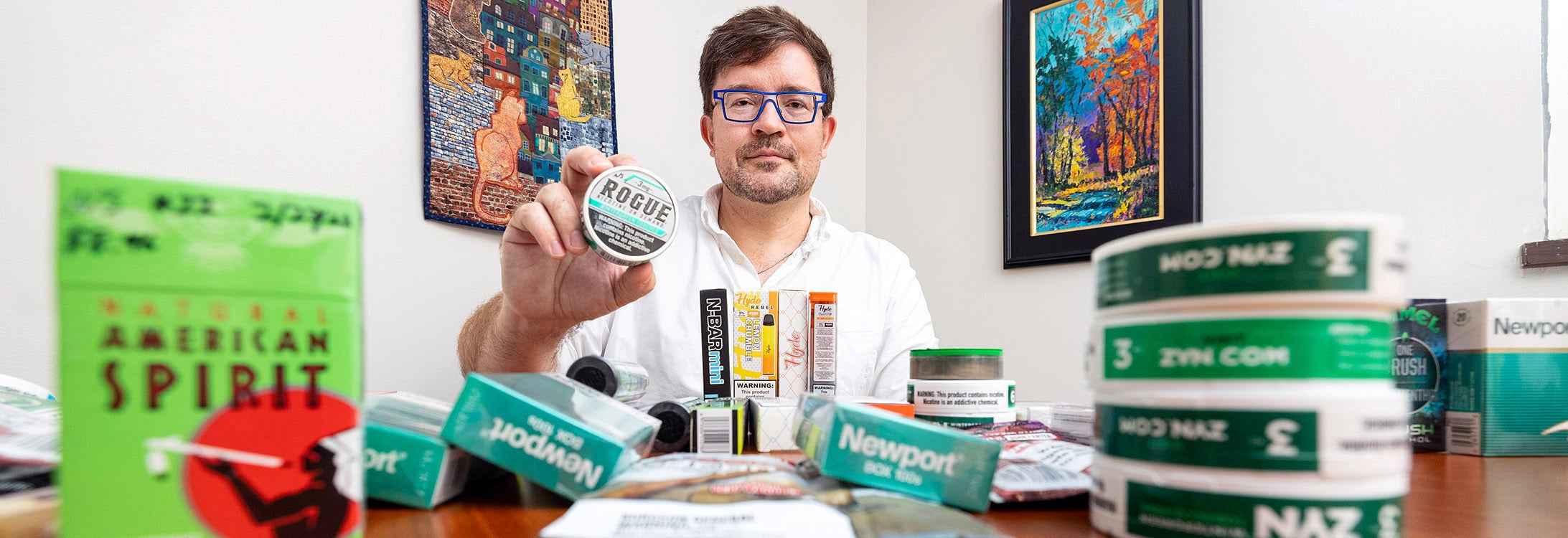TRACKING TRENDS
ECU part of comprehensive tobacco and nicotine study for FDA
Joseph Lee of the East Carolina University College of Health and Human Performance is part of a five-year, $18 million national consortium to supply rapid data to the U.S. Food and Drug Administration on marketing, products and consumer behaviors with tobacco and nicotine, specifically among youth populations.
ECU will be awarded more than $500,000 to serve as the sentinel surveillance site in North Carolina. Grant money will fund the Rutgers University Center of Excellence in Rapid Surveillance in Tobacco, which began operations June 1. Lee, professor in the Department of Health Education and Promotion and HHP’s associate dean for research, and his team plan to establish what products are popular and potentially emerging locally for data collection.

East Carolina University is a sentinel surveillance site as part of a national consortium to supply data of tobacco and nicotine marketing and consumer behaviors to the U.S. Food and Drug Administration.
“The goal of this is to identify new products on the market and then be able to quickly track if they are being used by young people,” Lee said. “Through data collection in stores, to see what new products are, and surveys of young people, including in North Carolina, we can triangulate what young people are doing and what’s in stores and track things really fast. I think it’s important for ECU to be part of the national effort to identify emerging tobacco products and protect young people from them. As part of this national center for tobacco product surveillance, we are helping to do that.”
Surveillance includes researchers collecting information from marketing company databases and social media to determine new marketing strategies. Another element is analyzing retail scanner data to track tobacco sales and spot trends involving new product characteristics such as innovative flavors or delivery mechanisms. Data and responses from surveys will help provide the FDA with actionable information to improve its regulation of tobacco products.
“Nothing like this has ever been attempted before now,” said Cristine Delnevo, director of the Rutgers Center for Tobacco Studies and principal investigator of the rapid surveillance center, in a Rutgers news release. “No one has collected such comprehensive information, let alone organized and disseminated it rapidly. We think it will provide the FDA with meaningful and timely data to inform their congressionally authorized regulation of the tobacco market.”
In addition to Rutgers and ECU, Roswell Park Cancer Institute, Stanford University, University of Kentucky, The Ohio State University, Columbia University and Westat, Inc., are represented as co-investigators.
Lee has worked with colleagues at Rutgers and Stanford on similar projects. This serves as another opportunity to analyze tobacco use by youth and specifically to assist the FDA.
“The idea is this all gets fed back to the FDA, so they can track things and do better jobs of regulating the products, assessing them for harm and making sure they are complying with the federal regulations about tobacco products,” Lee said. “It’s really to inform the work of the Food and Drug Administration’s tobacco regulation.”
The Center for Disease Control and Prevention reported in 2017 a considerable increase in tobacco product use among youth, particularly with e-cigarettes and high school students. In 2018, physician and then-FDA Commissioner Scott Gottlieb said youth vaping had developed into an epidemic.
Lee said part of this project’s aim is to prevent unexpected scenarios like what happened with youth vaping during those years.
“Youth vaping caught everyone off guard and went way up really fast,” he said. “Ideally, this will help us catch that earlier so we can address the problem before it really takes off, like youth vaping did.”
